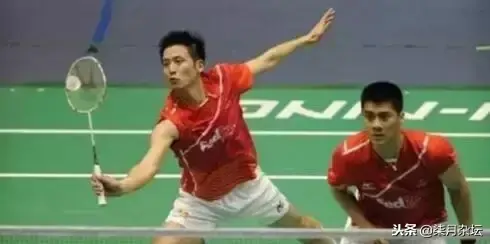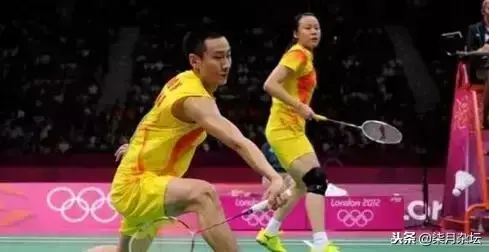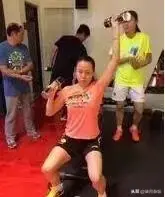Badminton, how to teach yourself?
If you want to play badminton well, you should first pay attention to basic skills and comprehensive basic skills, and consider it from a long-term and development perspective.
1. Manipulation essentials
Whether the technique is good or not is closely related to how to hold the racket..
(1) Hold the racket to live.
Before hitting the ball, don’t hold the racket tightly at any time (it is wrong to hold the racket rigidly), and only hold the racket tightly when you are about to hit the ball hard, which is conducive to exerting your strength. After completing the batting action, againanswerTo relax and hold the racket.

⑵ The grip should be changed.
Forehand and backhand, active and passive, playing different techniques, the position of fingers (mainly thumb, index finger and middle finger) should be changed.
(3) the grip should be loose.
Don’t cling to the handle, pay special attention to controlling the strength and making the "twisting action" of your fingers, which will help to improve the delicate techniques such as before the net, hanging the ball, catching and blocking the net.
The advantage of correct manipulation is that the strength of all parts of upper limbs-shoulders, upper arms, forearms, wrists and fingers can be used reasonably and harmoniously.
Especially the explosive force of the wrist and the flexibility of the fingers.
Pay attention to good control when exerting force;
The strength, the speed of the concerto and the change of direction will directly affect the quality of the technology.

Talk about the consistency, concealment and mutation of technical action again.
What is said is that several different technologies should be consistent when doing preparatory actions.
Just at the moment of hitting the ball, I used different strength and made different actions.
Or suddenly erupt, or control power, or change direction.
For example, use the preparatory action to kill the ball to hang the ball or hit the high ball, and use the preparatory action (posture) to kill the diagonal.
Zhao Jianhua’s technique has this characteristic, which makes it difficult for the other party to judge and increases (or improves) the threat.
2. Footwork essentials
Mastering a good technique, without correct footwork, will often affect the force or fail to complete the action because the footwork is not in place, resulting in mistakes or a passive position.
howFootwork ofIs the right one?
First, when preparing for the action, the body’s center of gravity is placed between the left and right legs and constantly shifts.
For the right-handed grip, the right foot stands slightly ahead of the left foot, the left foot can’t follow the ground, and the body center of gravity keeps moving between the forefoot of the left foot and the right foot. This kind of preparation is helpful for the start of footwork.
Second, the starting of footwork.
Adjust the body center of gravity and make a quick step with your left foot; Then take another step with your right foot, or take off in parallel.
Third, pay attention to using the strength and rotation of the hip joint (rotating left and right along the longitudinal axis of the body) to complete the support and pedaling.
For example, after hitting the head ball back, catch the twists on both sides, catch the pedal force of hanging the internet, etc.
It is faster and more powerful to use the hip to drive the body to rotate than the waist. Moreover, excessive use of the waist will cause excessive local load on the waist, resulting in strain contusion.
Fourth, the lower limbs (feet) should move faster.
Including quick start and quick return, many people notice the quick start and ignore the quick return, which is not conducive to the next start.
The above essentials will helpQuick startTo improve the flexibility of footwork.
When there is a judgment error, it can be adjusted quickly.restarting.

There are three kinds of footwork: active, passive and transitional.
Generally speaking, active footwork (offensive footwork) has a higher body center of gravity and a higher hitting point.
Most of them use the method of pedaling and jumping, and pedaling and stepping.
Passive footwork (defensive footwork) has a lower body center of gravity and a lower hitting point. Most of them make a small step with the left foot and a big step with the right foot.
Transitional footwork, the body center of gravity is located between the first two footwork.
Neither high nor low, the pace is slightly slower, and cross steps can be used.
The main function is to adjust the center of gravity of the body to facilitate the next action.
In the process of confrontation, initiative and passivity, attack and defense or stalemate are constantly changing.
Changes in the height of the body’s center of gravity should be timely.
Basic technical exercises
Including: lob, lob, kill and net ball, etc.

Practice the basic skills from easy to difficult.
Including:
From static to moving, from single line to double line;
From the combination of two techniques (such as: lob and lob, kill and lob, lob and net ball, etc.) to the combination of multiple techniques;
From fixed ball path to changing ball path;
From hitting the ball in place (actively) to hitting the ball at multiple points (including passive), it has gradually developed into tactical technical training, such as offensive and defensive exercises, control and anti-control exercises.
Physical training
In addition to basic technical exercises and footwork exercises, other aspects such as:
Strength, speed, bounce, endurance, agility, coordination, etc., should be arranged in proportion according to the period to enhance physical fitness, which is the basis for injury prevention and ensuring large-scale exercise training.
